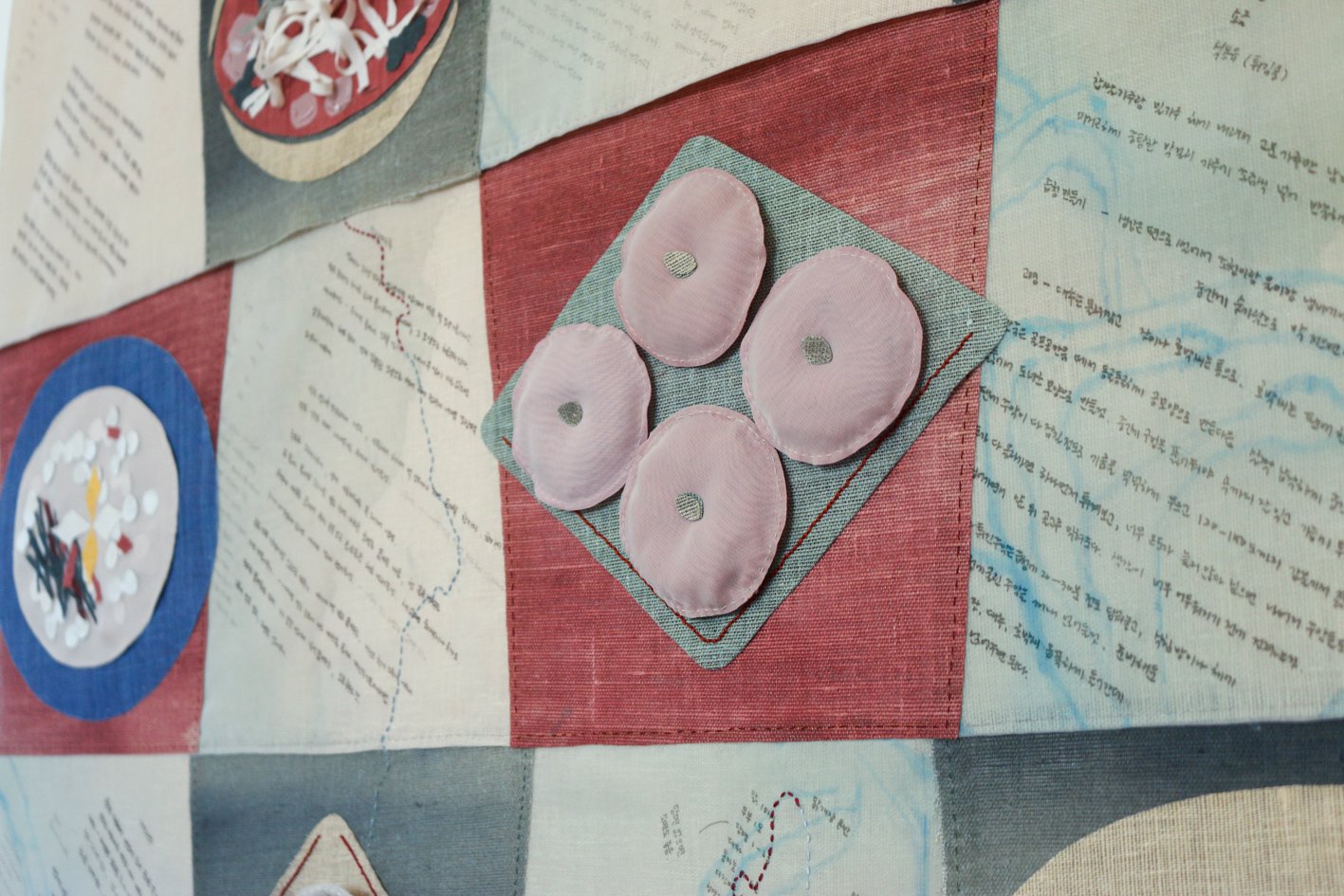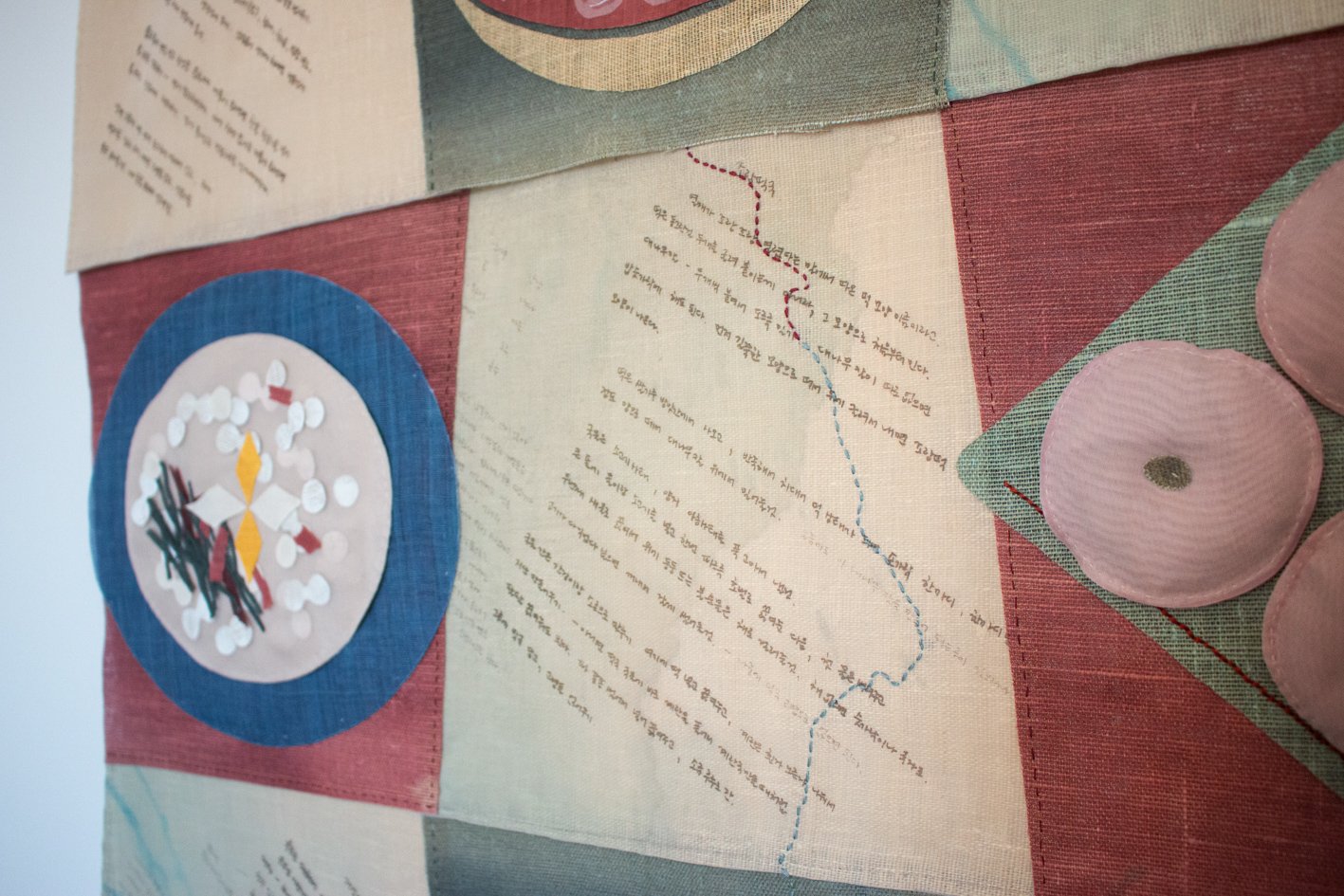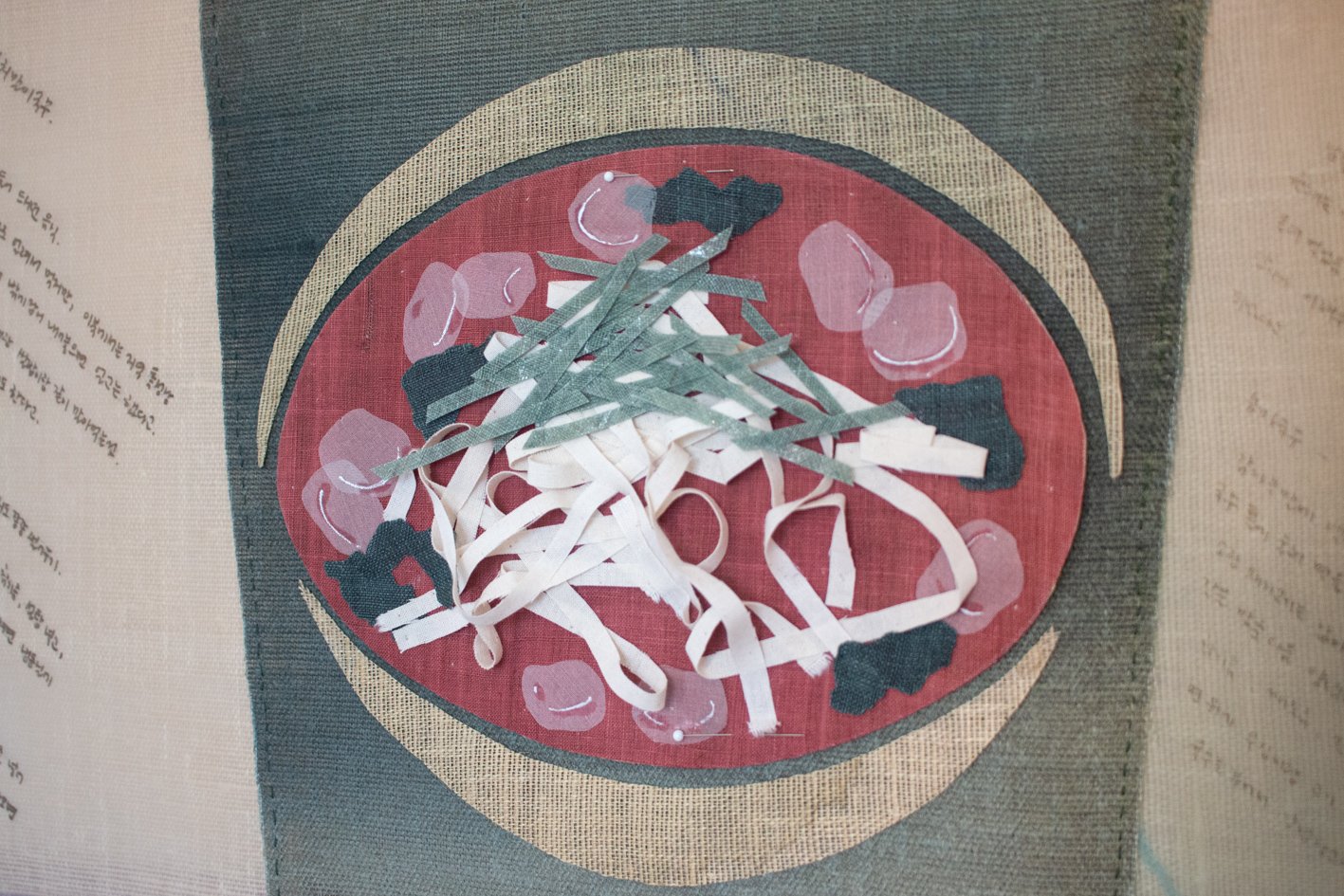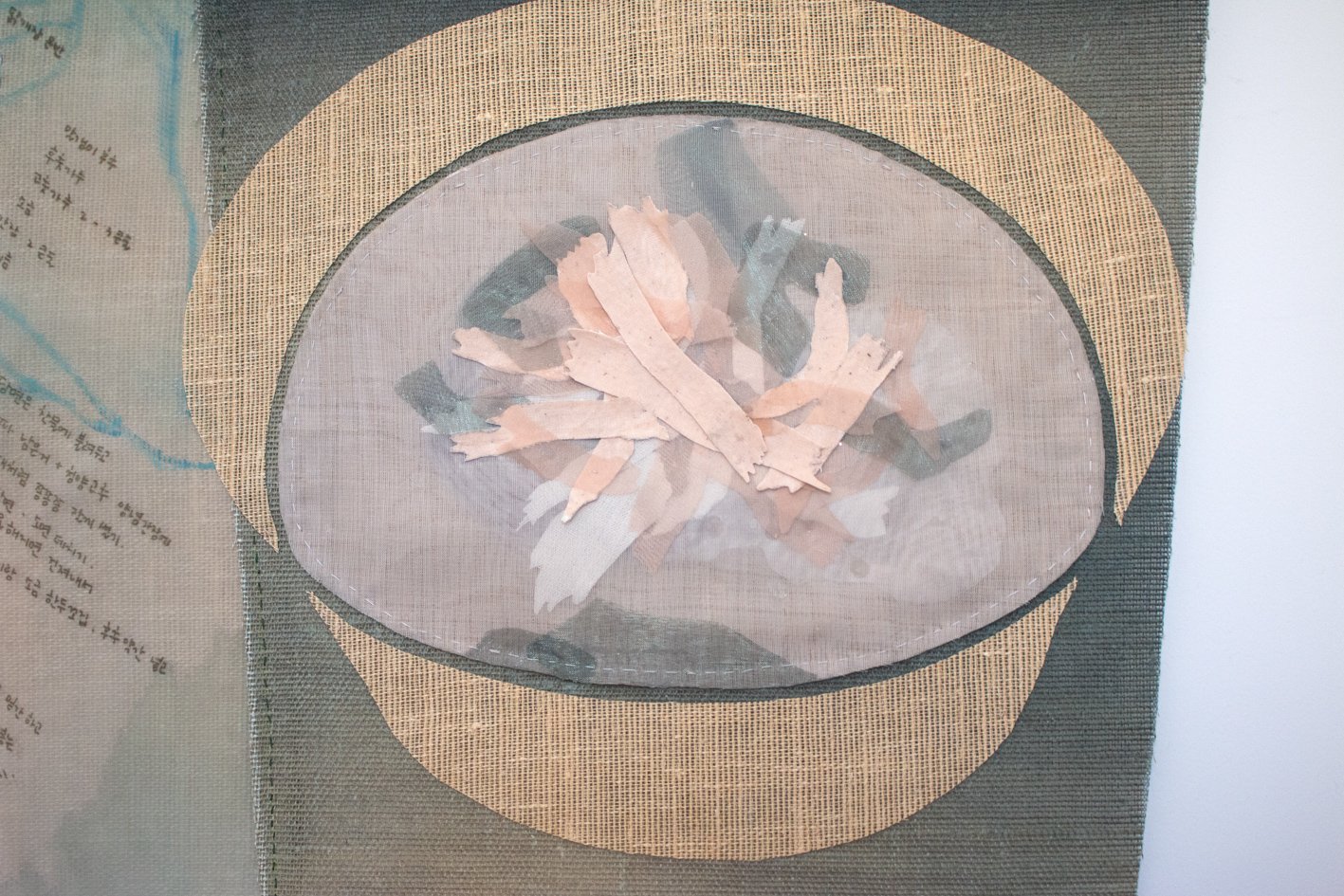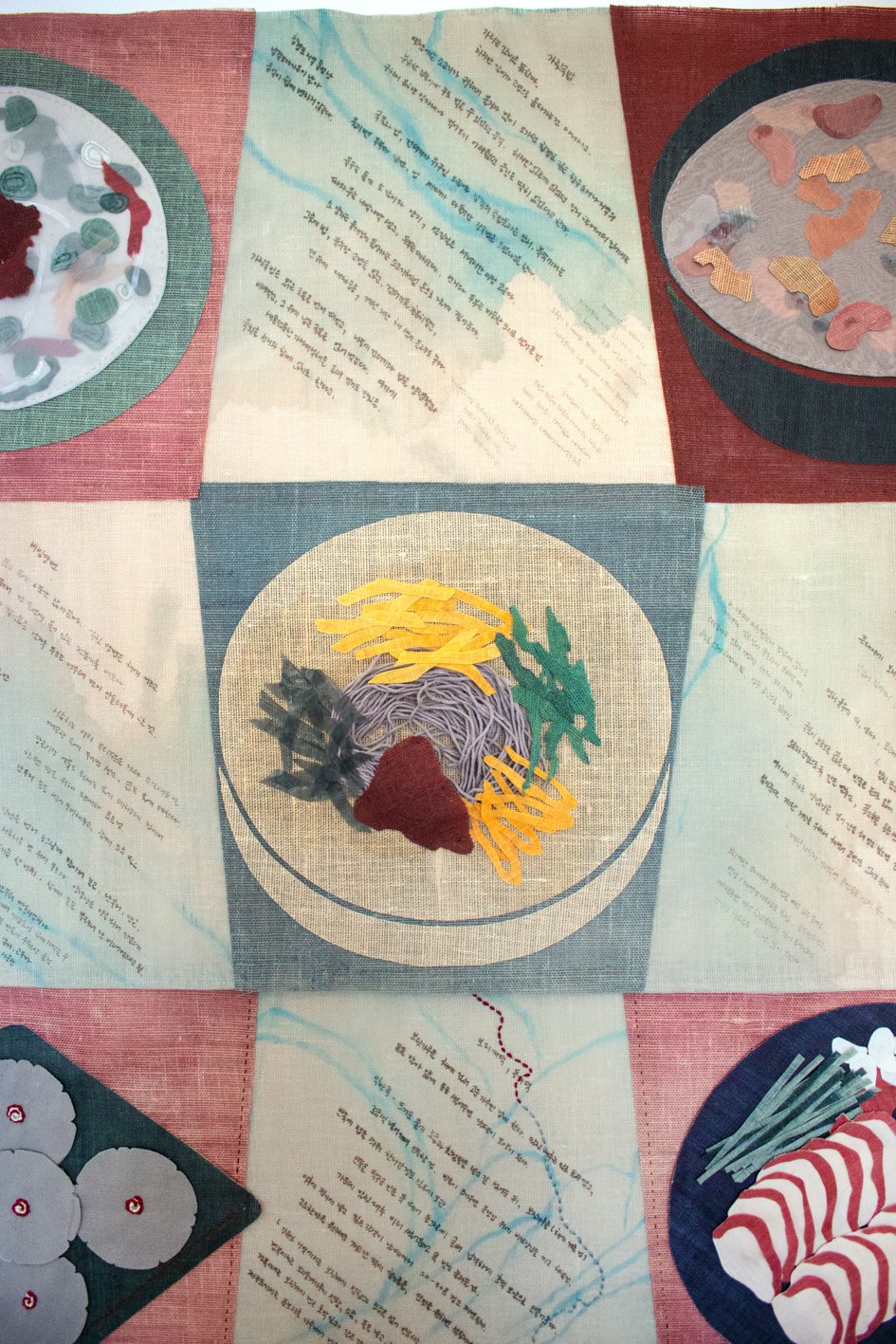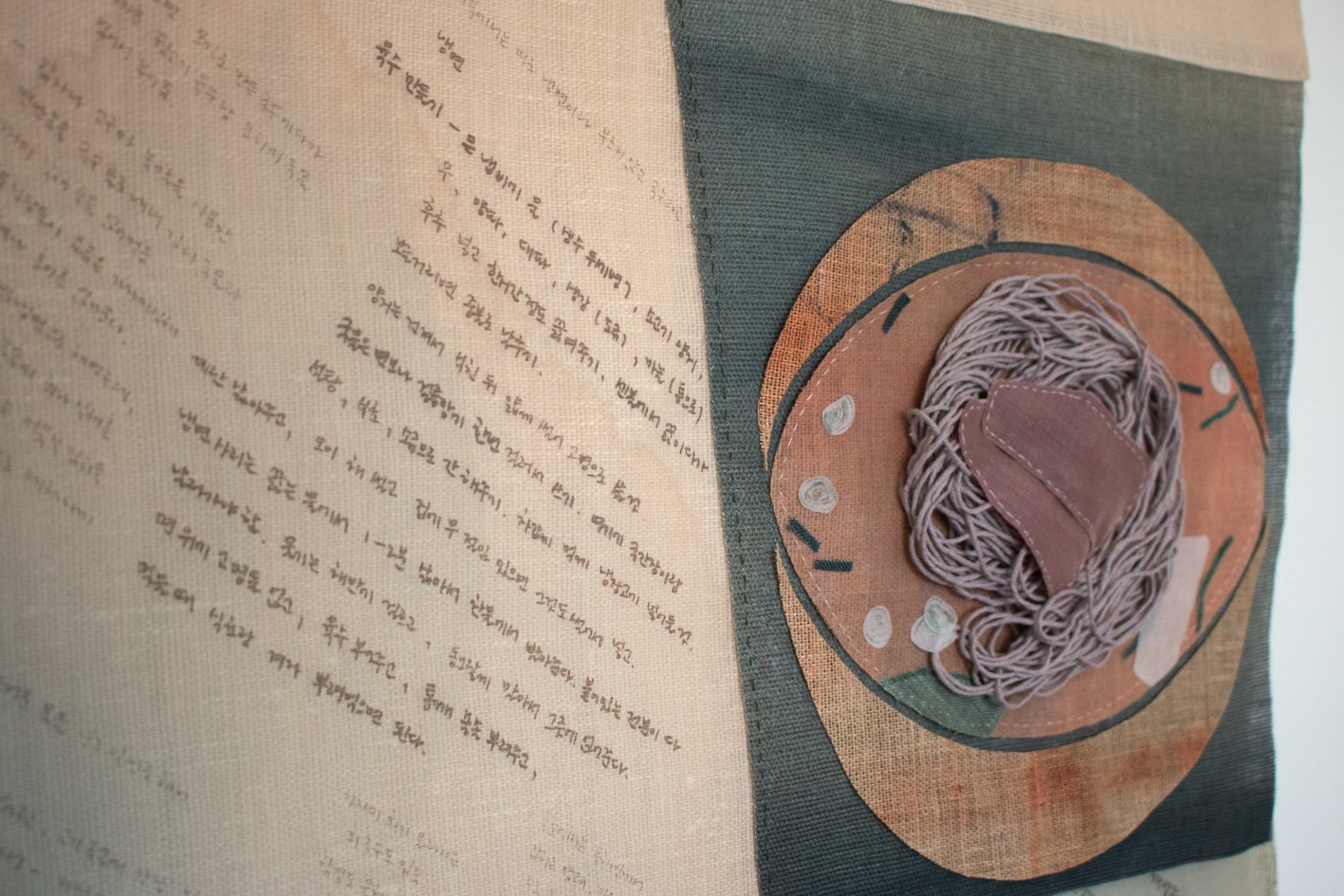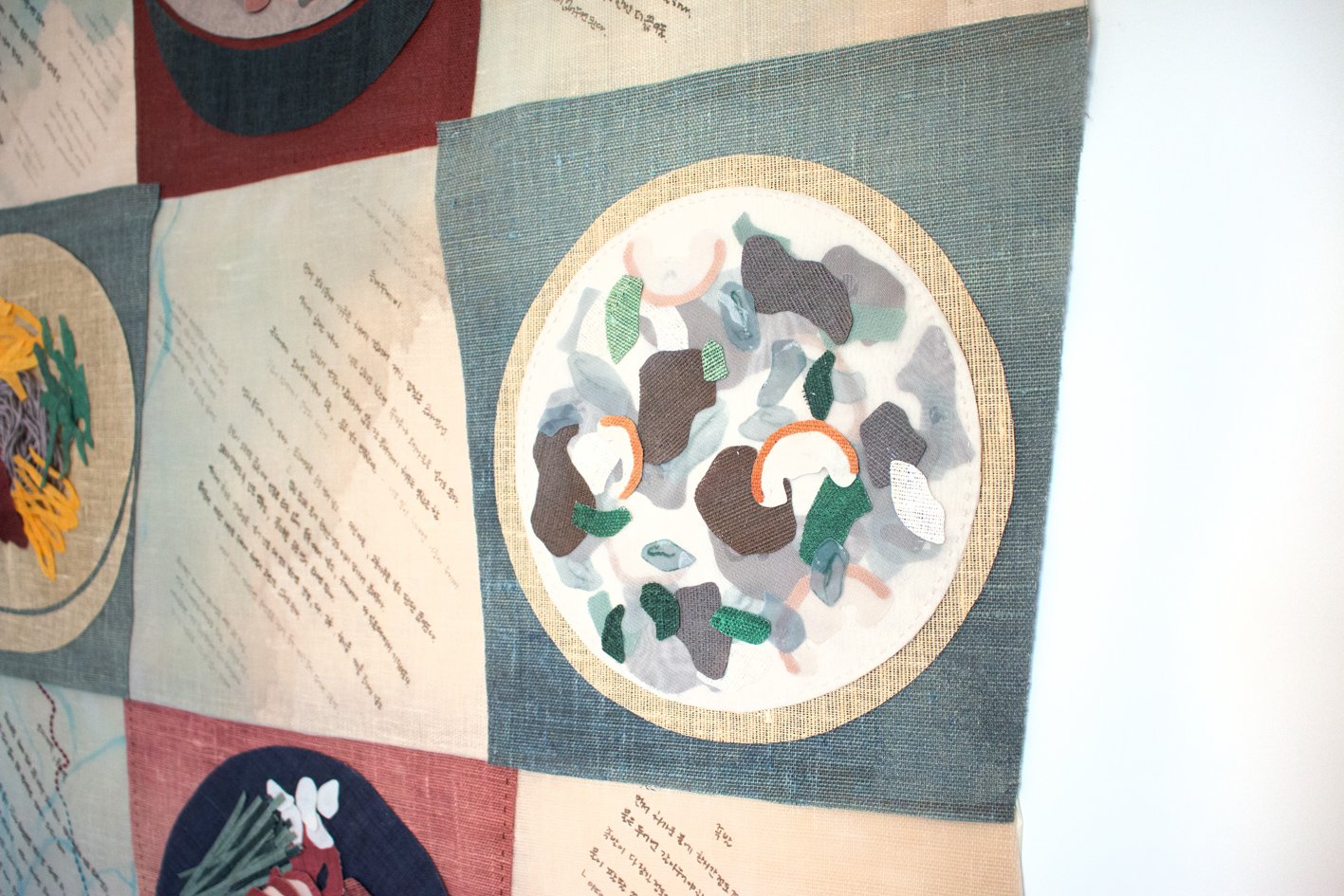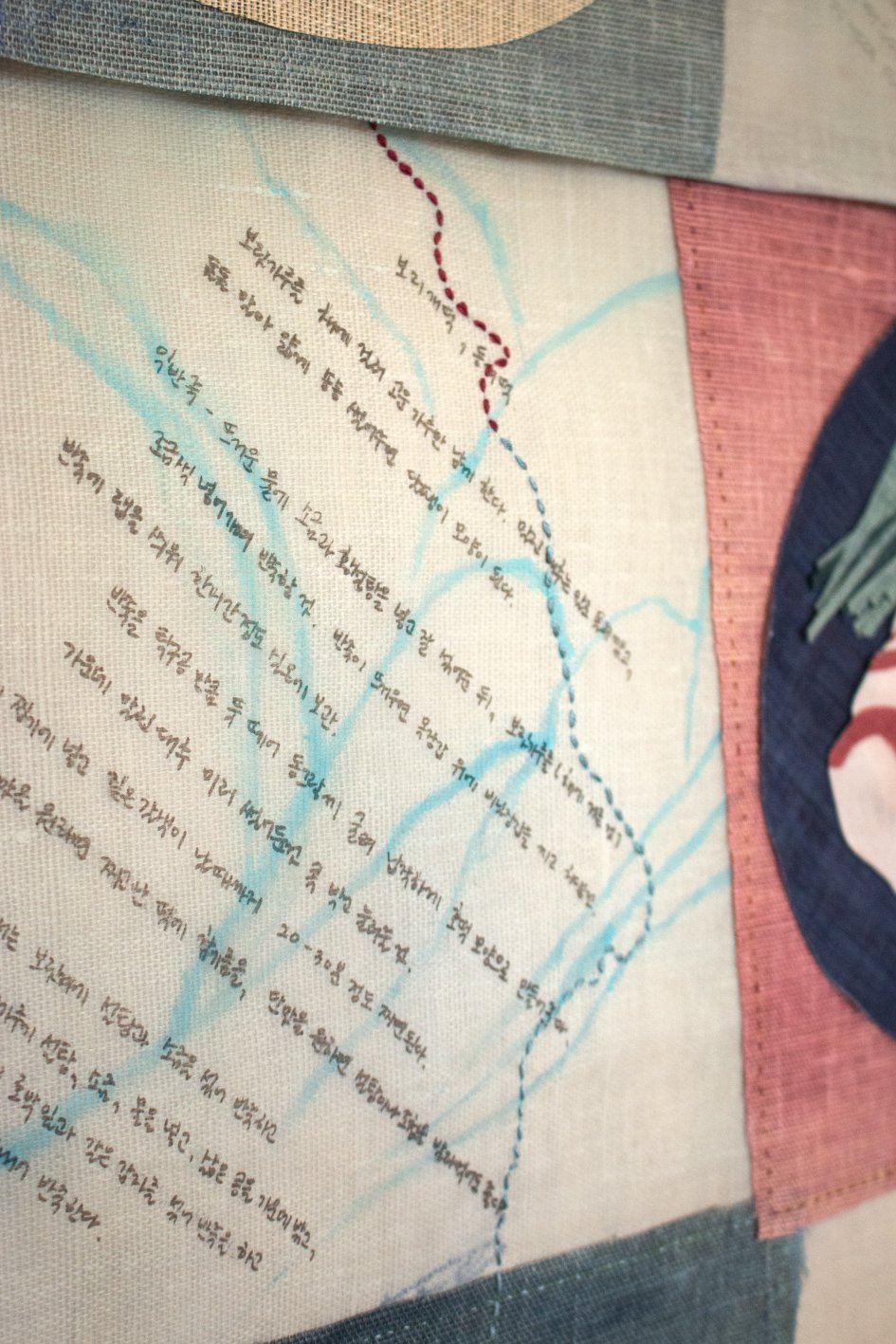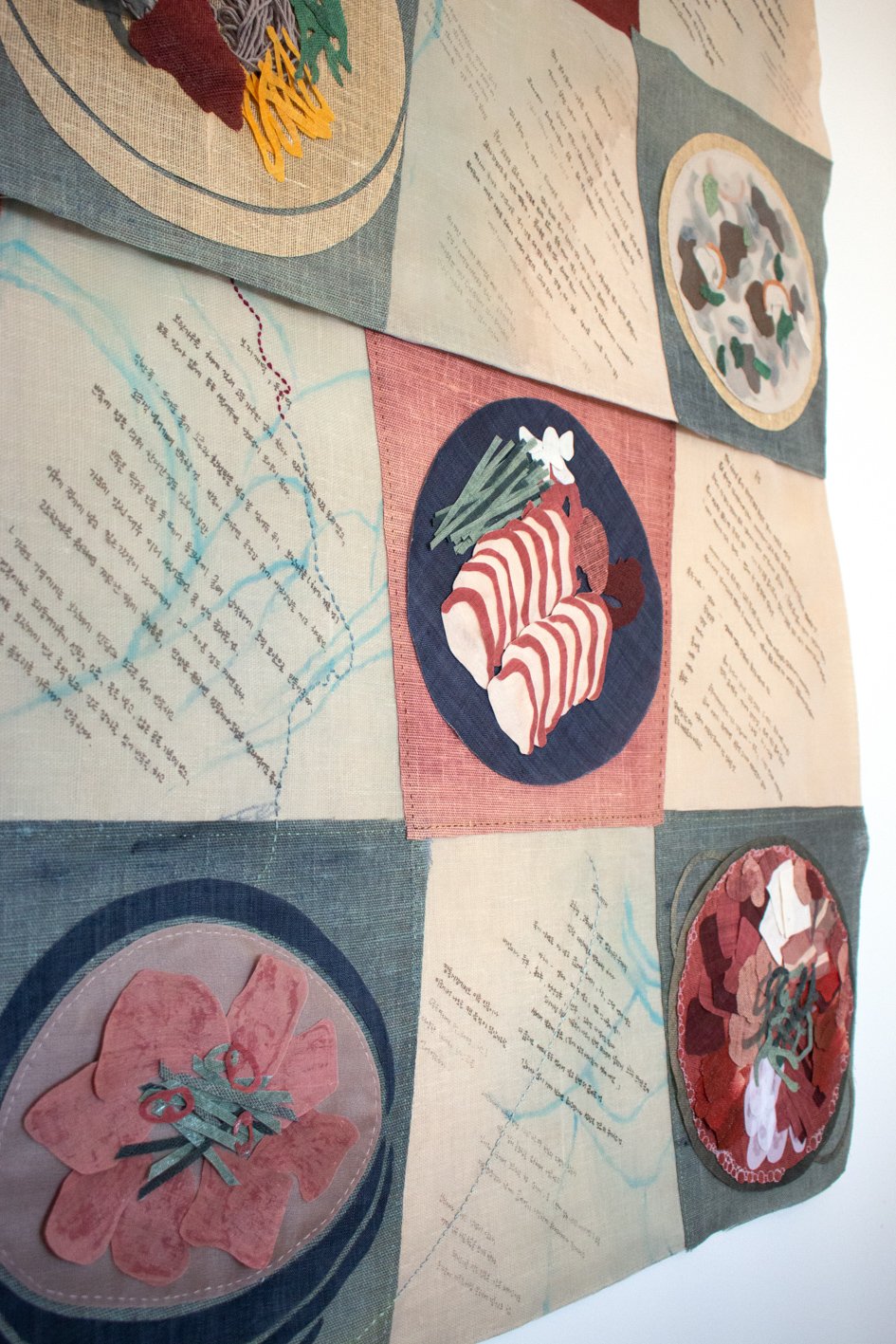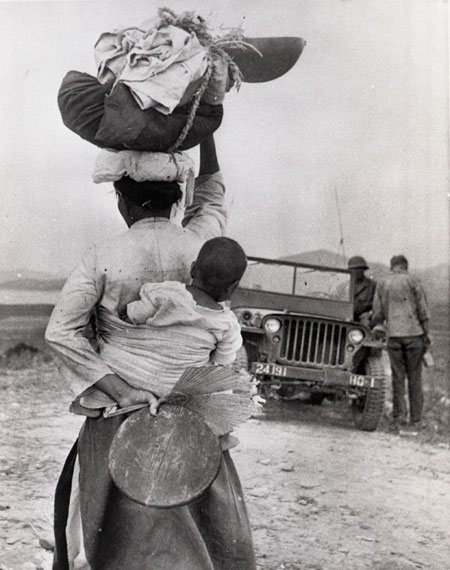
Finalist for Drempelpris in Social Practice Category, NL
Shortlist for Arts Thread Global Design Graduate Show 2023 in Collaboration with Gucci, UK
Thesis
To Where Do We Flow: What Does America’s Presence in South Korea Do to South Koreans?
Practice
How do lives continue and evolve when a temporary situation becomes permanent?
When Koreans hung the red and blue Korean flag again in 1945 after 30 years of Japanese Occupation, we hoped we would see the end of colonization in our land with the Japanese troops withdrawing. Yet, what was waiting for us was the US military flooding in and our peninsula splitting in half over a single horizontal line drawn on the map by forces outside our country. While America’s presence in the South grew and solidified in the 1950s, South Koreans learned to put distance from the North, the other half of us. As discussed in the second chapter of my research, the closer South Korea gets to the US, the further we drift away from uniting with the North.
To Where Do We Flow: Finding Our Lost Half archives my grandmother’s food from the North before the division - what she made to belong to her old home in Kaesong before the Korean War - and emancipates her journey to the South during the 1950s. It looks into how lives in Korea have evolved around the condition of division and shortens current South Koreans’ emotional distance towards the idea of an undivided Korean peninsula. When my grandmother fled from the North to the South with her mother during the Korean War as a 15-year-old, she never imagined the War lasting so long. My grandmother did not bring much with her because she thought - just like any other Korean then - she could return to the North and see the rest of her family again soon. In a condition where the idea of returning home has become impossible, my grandmother and her mother making the food they used to have in Kaesong with the rest of their family was the only way they could grasp onto their roots and belong to their home; her food from Kaesong now has become my mother’s and my roots. Through archiving my grandmother’s recipes of the food from the North before the division and dishes made during the War in the South, I look at the stories of our elders being resilient to compose their lives again, even in loss. Making a bojagi, a textile Koreans use in wrapping our precious belongings on the move, is my way of composing my grandmother’s stories of her family in Kaesong and her journey to the South that she shared in bits and pieces while sharing her recipes. By putting pieces of my grandmother’s experience of the Korean peninsula before and after the division, I shorten the distance current South Koreans feel towards the North and undivided Korea that compose our roots.
Additional Research
Timeline · Korean War · America in South Korea: 1940s-Today · Modernization Theory · The History Struggle · “Keeping South Korea Bound to the US” · America Seen Through Portals · Interview Transcripts · Reading List











